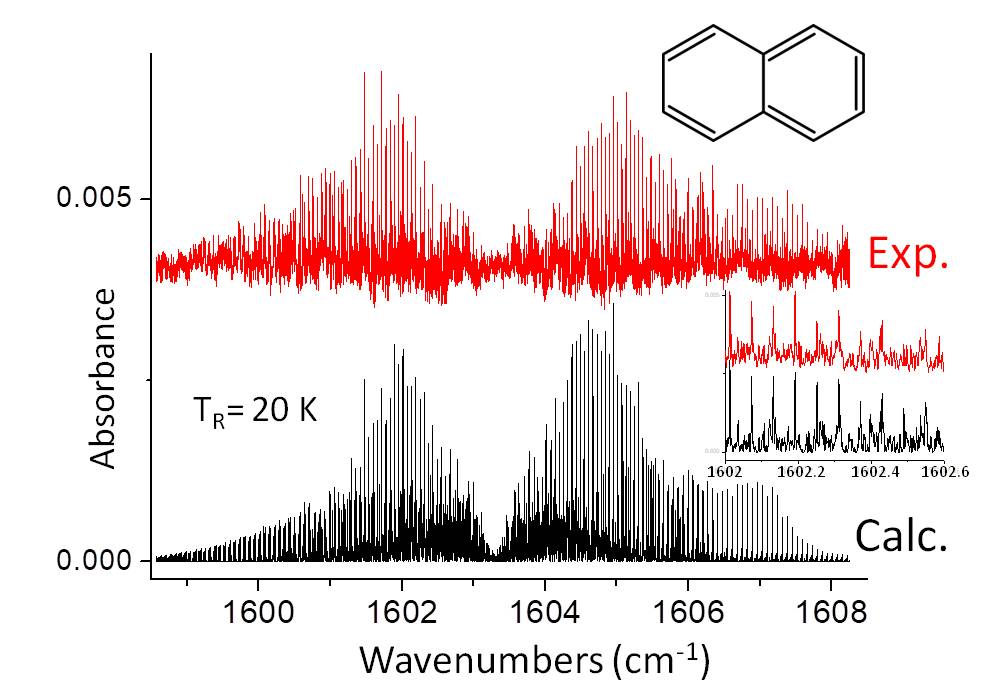High resolution rovibrational spectroscopy of bicyclic aromatic hydrocarbons.
Benzene dissociation from the UV and soft X-ray emission of proto-planetary nebula CRL618 [1] as well as the detection of Buckminsterfullerene (C60) founded in meteorites [2] inquiry us how these large molecules were formed in the Interstellar medium (ISM). Since 80s, Polycyclic aromatic hydrocarbon (PAH) molecules are suspected to be the carriers of Unidentified Infrared Bands (UIB) emitted in the ISM but no unambiguous proof was provided until the recent discovery of benzonitrile [3] and cyano-naphthalenes [4] by radio-astronomy which confirms the interstellar PAH hypothesis. Feeding high resolution laboratory data about these compounds becomes highly necessary in the perspective of the future launch of James Webb Spatial Telescope, in order to elaborate chemical models leading to the formation of these molecular bricks. In this context, high-resolution IR jet-cooled experiments were realized with the SPIRALES set-up implemented at MONARIS. Three tunable quantum cascade lasers were used to investigate the 980-1030 cm -1 and 1580-1720 cm-1 ranges of CH in-plane bending and CC ring stretch vibrational modes, respectively. The present study is firstly dedicated to smallest bicyclic PAHs, naphthalene and biphenyl. Their centro-symmetry excludes any pure rotation study and IR spectroscopy becomes mandatory to retrieve rotational parameters in both ground and excited vibrational states. Additionally, nitrogen-substituted polycyclic PAHs such as quinoline and isoquinoline have been investigated because of the assumed key role in the interstellar chemistry [6].

Jet-cooled laser spectrum of the CC ring stretch band of naphthalene compared to the simulated spectrum at a rotational temperature of 20 K.
[1] H.M. Boechat-Roberty, R. Neves, S. Pilling, A.F. Lago, G.G.B. De Souza, MNRAS, 2009, 394, 810-817. [2] L. Becker, J.L. Bada, Nature, 1994, 372, 507. [3] B. A. McGuire, A. M. Burkhard, S. Kalenskii, C. N. Shingledecker, A.J. Remijan, E. Herbst, M.C. McCarthy, Science, 2018, 359, 202-205. [4] B. A. McGuire et al. Science, 2021, 371, 1265-1269. [5] P. Asselin, Y. Berger, T. R. Huet, R. Motiyenko, L. Margulès, R. J. Hendricks, M. R. Tarbutt, S. Tokunaga, B. Darquié, Phys .Chem. Chem. Phys. 2017, 19, 4576-4587. [6] D.S.N. Parker, R.I. Kaiser, O. Kostko, T.P. Troy, M. Ahmed, A.M. Mebel, A.G.G.M. Tielens, The Astrophysical Journal, 2015, 803, 1-10.